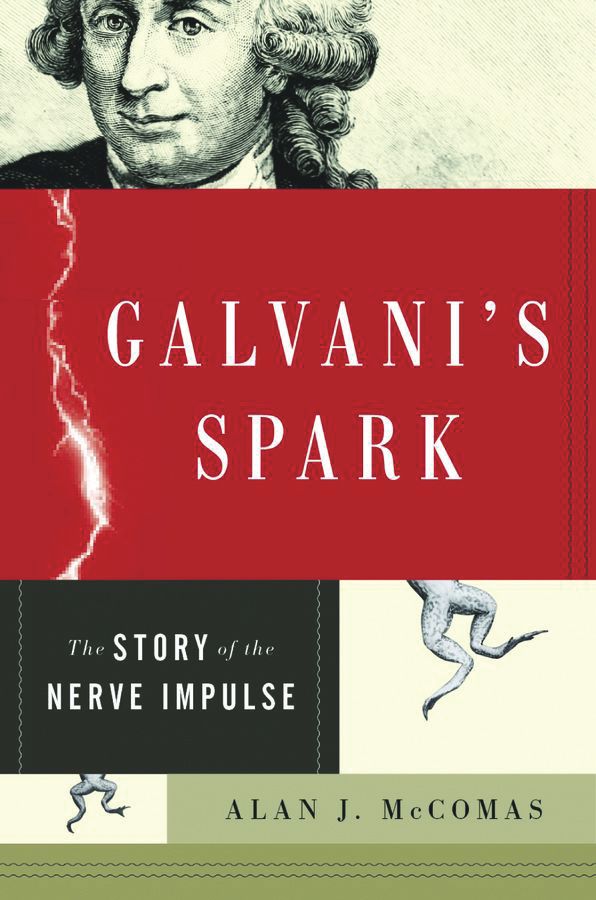
Physiology News Magazine
Book review: Galvani’s Spark by Alan J McComas
Membership
Book review: Galvani’s Spark by Alan J McComas
Membership
Angus Brown
Associate Professor of Neuroscience, University of Nottingham
https://doi.org/10.36866/pn.88.47

In a previous review (PN 84, 2011) I pleaded for a book entitled ‘A History of Twentieth Century Electrophysiology’ and my prayers have been answered! In this book, McComas describes the evolution of our knowledge of the nerve impulse from the serendipitous discoveries of Galvani over two centuries ago, to the present day. The story starts with detailed descriptions of Galvani’s discoveries around the frog peripheral nerve and his feud with Volta, who claimed that the electricity required to generate the famous muscle twitches was generated outside the body. The contrasting fates of Volta and Galvani are a sanguine lesson in cultivating powerful patrons.
The book progresses through the 19th century with descriptions of the work of du Bois-Reymond, Helmholtz and Bernstein duly covered, but the narrative takes flight on the eve of the 20th century with the triumphs of Cajal and Golgi. Their work, and long-lasting feud, are related in fascinating detail, underlining, as occurs again and again in this marvellous book, how the personality of the researcher drove the direction and intensity of their work. The area that will probably be of most interest to readers of Physiology News will be Erlanger and Gasser’s pioneering work, leading up to the glories of Hodgkin and Huxley, followed by the explosion in electrophysiology in the latter half of the century.
This is all chronicled in detail, with a host of fascinating (and unknown to me) tidbits relating to the work. If you want to know why the authorship for one of Erlanger and Gasser’s classic papers read “Erlanger and Gasser with the collaboration in some of the experiments of George Bishop”, and the murky details of why Bishop was not awarded the Nobel Prize to which he was entitled, read on.
The author worked with Andrew Huxley and not only dedicates the book to him, but accurately describes the triumphs of his career. The achievements of Hodgkin and Huxley are often taken for granted nowadays, but the author forensically describes their progress, labours and ultimate triumphs. It is worthwhile noting the confusion and false leads of their contemporaries Lorente de No, Kenneth Cole and John Eccles, to realize just how miraculous their work was. The book concludes with coverage of the patch clamp technique, channelopathies and Rod MacKinnon’s work on elucidating the 3D structure of potassium channels.
The footnotes to the individual chapters and the references section are worth the cost of the book alone in highlighting long-forgotten or previously unread papers – Rinzel (1990) Bull Math Biol 5, 25-23 being an excellent example of clarity and insight into Hodgkin and Huxleys’ work.
This is an excellent book which should be a mandatory purchase for all electrophysiologists and an accessible introduction to the subject for inquisitive students.
